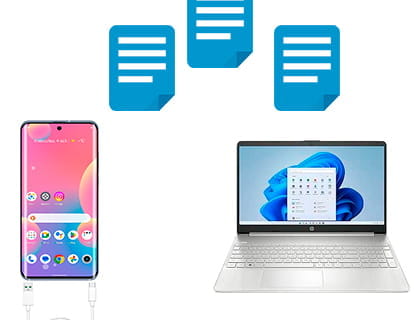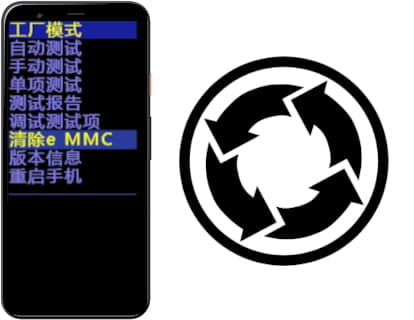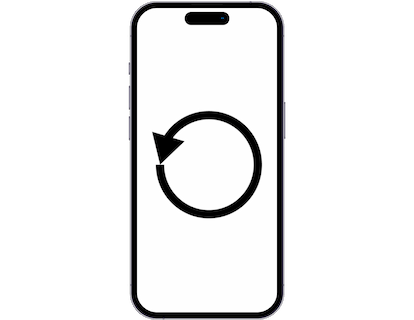Factory reset Samsung Galaxy Tab 10.1 LTE I905

How to reset or restore a Samsung Galaxy Tab 10.1 LTE I905
If your Samsung Galaxy Tab 10.1 LTE I905 smartphone is running very slowly, hanging, you want to bypass the screen lock, or you have a full memory and want to erase everything, or you want to sell or give it away and want to ensure that nobody can access your files and passwords, you can do a factory reset to restore it to its original state like the first day.
In the following steps we explain how to format the Samsung Galaxy Tab 10.1 LTE I905 to erase all your information and make it totally clean as it came out of the store.
Before doing a factory reset, we recommend deleting all the accounts on the device, specifically it is useful to unlink the Google account if you are going to sell, donate, or give away your Galaxy Tab 10.1 LTE I905. This will avoid problems for the new user, as some newer devices include a functionality called FRP (Factory Reset Protection) that requires the same Google account or PIN code with which the Samsung Galaxy Tab 10.1 LTE I905 was initially configured when factory resetting a device.
Keep in mind that a reset or return to the factory state on a tablet deletes all its content, so make a backup of your data before doing it if you don't want to lose everything.
In case you do not want to erase the data from the device, you can try to restart the Samsung Galaxy Tab 10.1 LTE I905..
There are two ways to do a reset on a Samsung Galaxy Tab 10.1 LTE I905 one through the mobile options and another more complete from the recovery mode.
Table of Contents:
Restore from the options of Samsung Galaxy Tab 10.1 LTE I905
If you want to make a reset using the device options to return to the factory state a Samsung Galaxy Tab 10.1 LTE I905 you have to follow these simple steps:
Estimated time: 5 minutes.
1- First step:
Access the settings menu of your Samsung Galaxy Tab 10.1 LTE I905, it is the gear icon. If you don't see it on the home screen, swipe up from the bottom of the screen and make sure it's there.
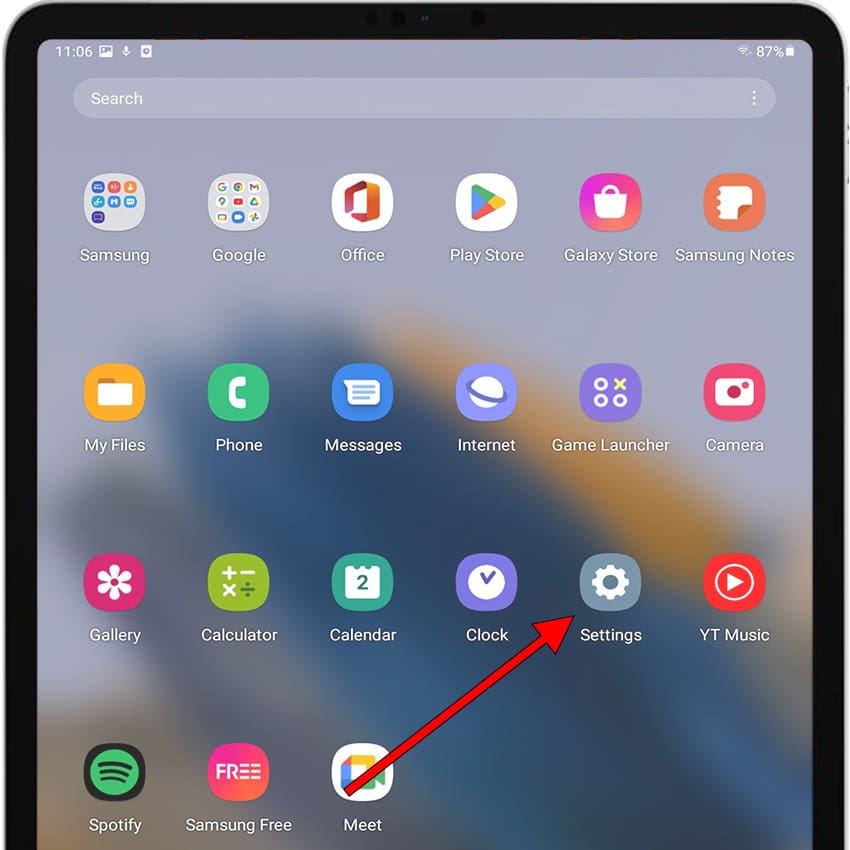
2- Second step:
Scroll down the Samsung Galaxy Tab 10.1 LTE I905 settings until you find the section called “General management”, press to access those settings and continue.
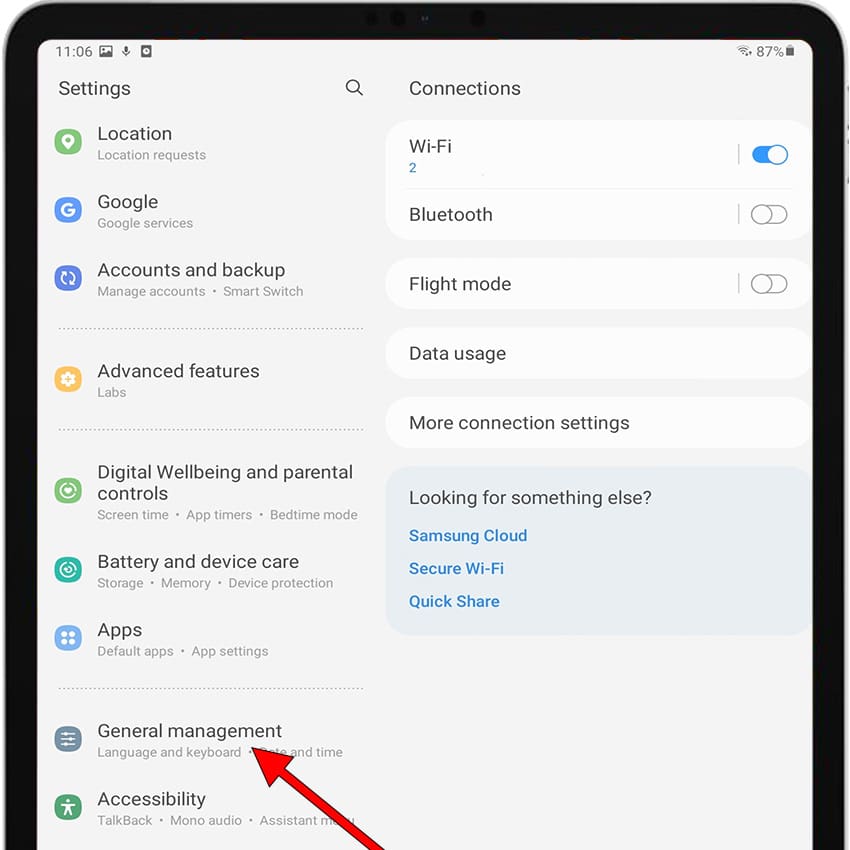
3- Third step:
If a section called “Advanced” appears, click to display the advanced options of the Samsung Galaxy Tab 10.1 LTE I905. Otherwise, scroll down until you see “Reset” and click on that option to continue.
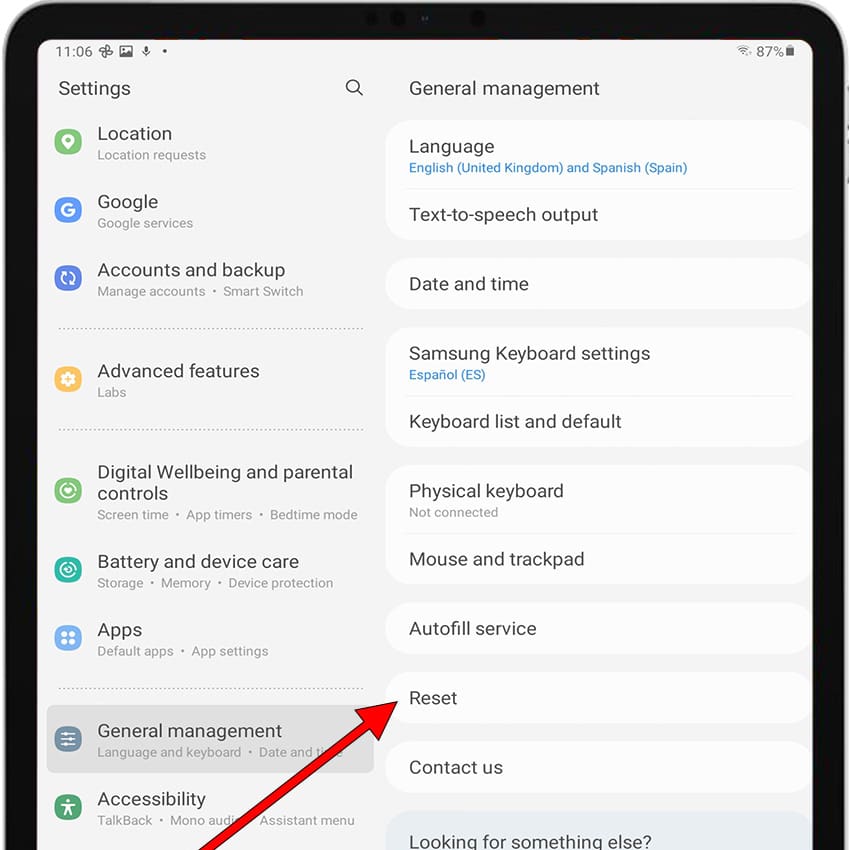
4- Fourth step:
Several options will appear to reset the Samsung Galaxy Tab 10.1 LTE I905, the first called “Reset settings” resets the default settings, it is a simpler and less deep reset. The method to remove all the content from the Galaxy Tab 10.1 LTE I905 completely is “Factory data reset” click on this option to continue.
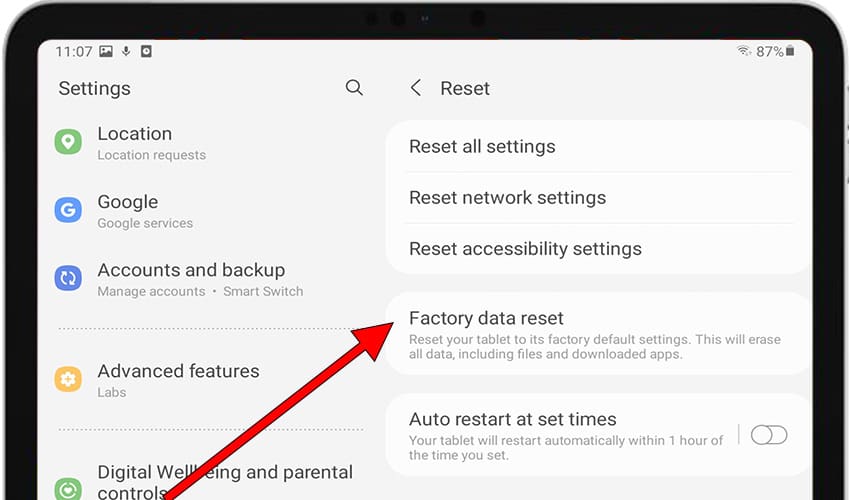
5- Fifth step:
A list of all the data that will be removed from the Samsung Galaxy Tab 10.1 LTE I905 and the applications that will be uninstalled will appear. Scroll down until you find the “Reset” button and press to continue with the process.
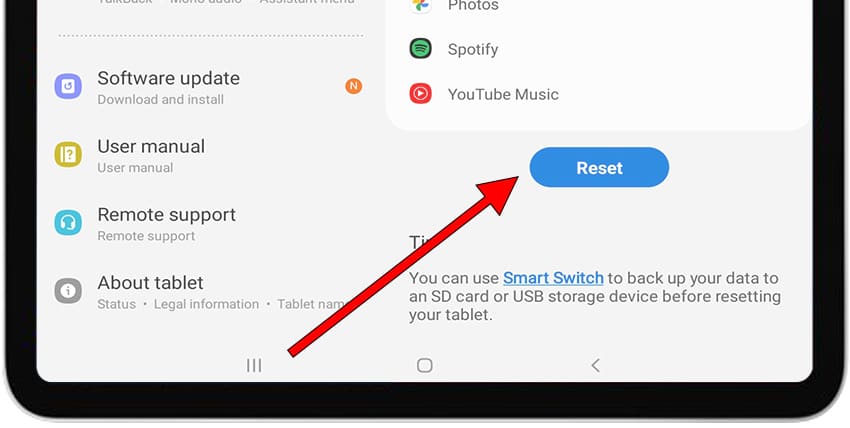
6- Sixth step:
If necessary, draw the screen unlock pattern or enter the screen unlock password or PIN to continue.
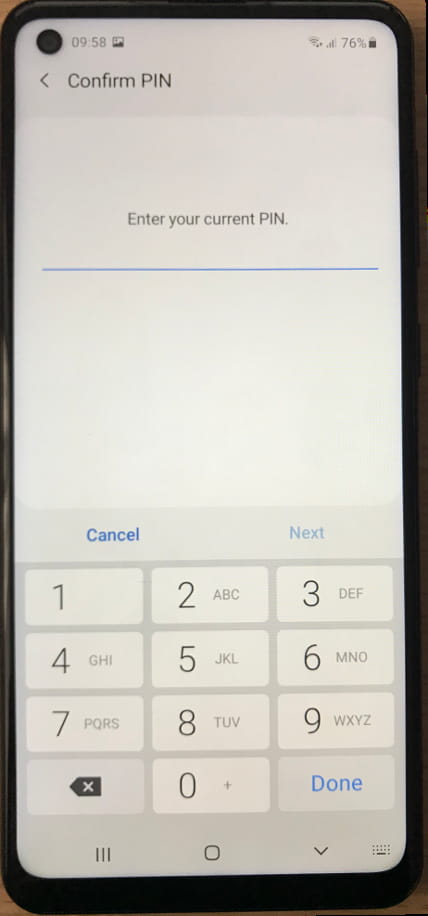
7- Seventh step:
A second confirmation message will appear indicating that all information stored on the Samsung Galaxy Tab 10.1 LTE I905 and all downloaded applications will be erased and reminding that this action cannot be undone. If you agree, click on “Delete all”.
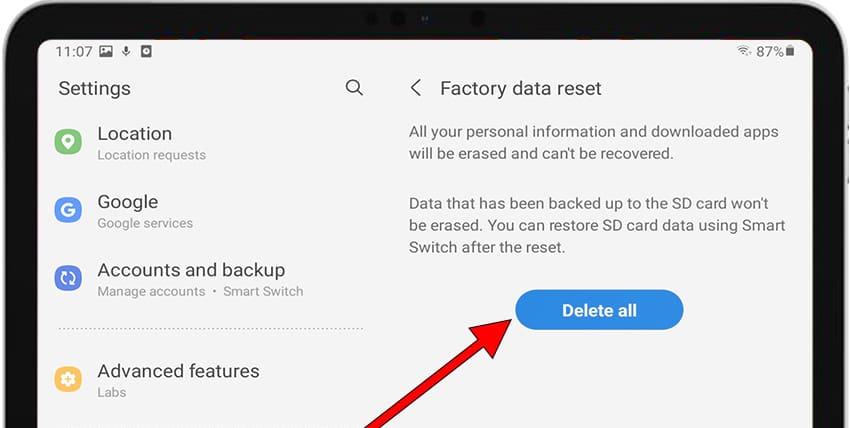
8- Eighth step:
Your device Galaxy Tab 10.1 LTE I905 from Samsung it will restart and take several minutes to start while restoring the device to its factory state and optimizing the applications pre-installed in the operative system Android 3.1 (Honeycomb).

If you cannot turn on the Samsung Galaxy Tab 10.1 LTE I905 and therefore you cannot perform the factory restore from the device settings, this method does not work for you and you should consult the tutorial to hard reset Samsung Galaxy Tab 10.1 LTE I905.

